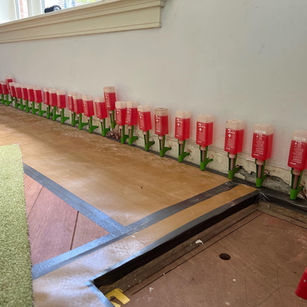
Request an inspection for moisture problems
If you are unsure whether your building suffers from rising damp in the walls or excessive humidity in the crawl space then we can determine this for you. Piket services carries out an inspection without obligation within two working days. Request your inspection below.
Moisture proofing
Rising damp, groundwater and penetrating damp can be common moisture problems in crawl spaces and walls. Here you will find general information about these problems and their possible consequences.
Rising damp:
Rising damp occurs when water from the ground rises into the walls or crawl space through capillary action. It often occurs in older buildings where there is no or an outdated moisture barrier. Rising damp can lead to damp spots, mold growth, loose plasterwork and damage to the structure.
Groundwater:
Groundwater can become a problem when the level rises and reaches the crawl space or walls. This can happen due to high groundwater levels, flooding or poor drainage systems. Groundwater can lead to damp crawl spaces, mold formation, wood rot and corrosion of metal structures.
Penetrating moisture:
Penetrating moisture refers to water that enters the crawl space or walls from outside, for example through leaks, poor pointing, cracks in the masonry or porous materials. It can lead to moisture problems, such as damp walls, mold formation, peeling wallpaper and deterioration of building materials.
Consequences of moisture problems:
Moisture problems can have various negative consequences, including damage to the structure, deterioration of materials, reduced insulation value, poor air quality, unpleasant odors and health problems due to mold growth.
Moisture control:
Addressing moisture problems in crawl spaces and walls requires an effective moisture control strategy. Some possible measures are:
-
Moisture barrier: Installing a moisture barrier, such as a waterproof foil or injecting a moisture-resistant agent, to prevent rising damp.
-
Drainage system: Installing a good drainage or dewatering system to drain groundwater and prevent moisture problems.
-
Sealing: Sealing cracks, crevices and poor joints to prevent penetrating moisture.
-
Ventilation: Ensuring adequate ventilation in the crawl space to reduce humidity and prevent condensation.
-
Professional help: In serious cases of damp problems, it is advisable to call in a professional damp control company. We at Piket Services can carry out a thorough analysis and offer appropriate solutions.
It is important to take moisture problems in crawl spaces and walls seriously as they can lead to structural damage and health problems. Contact us for an expert analysis and an effective solution.






